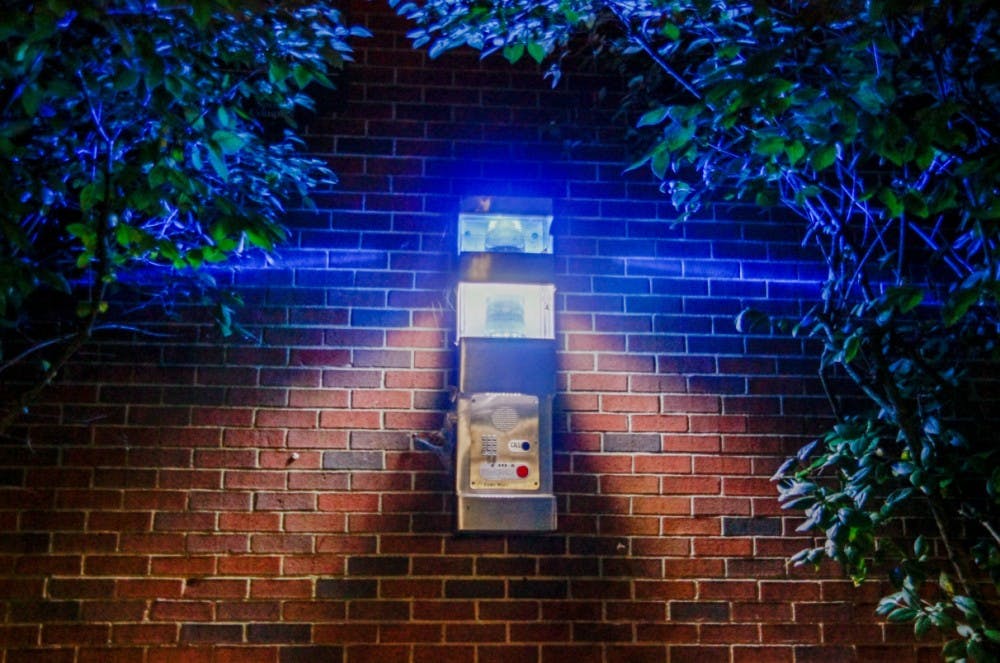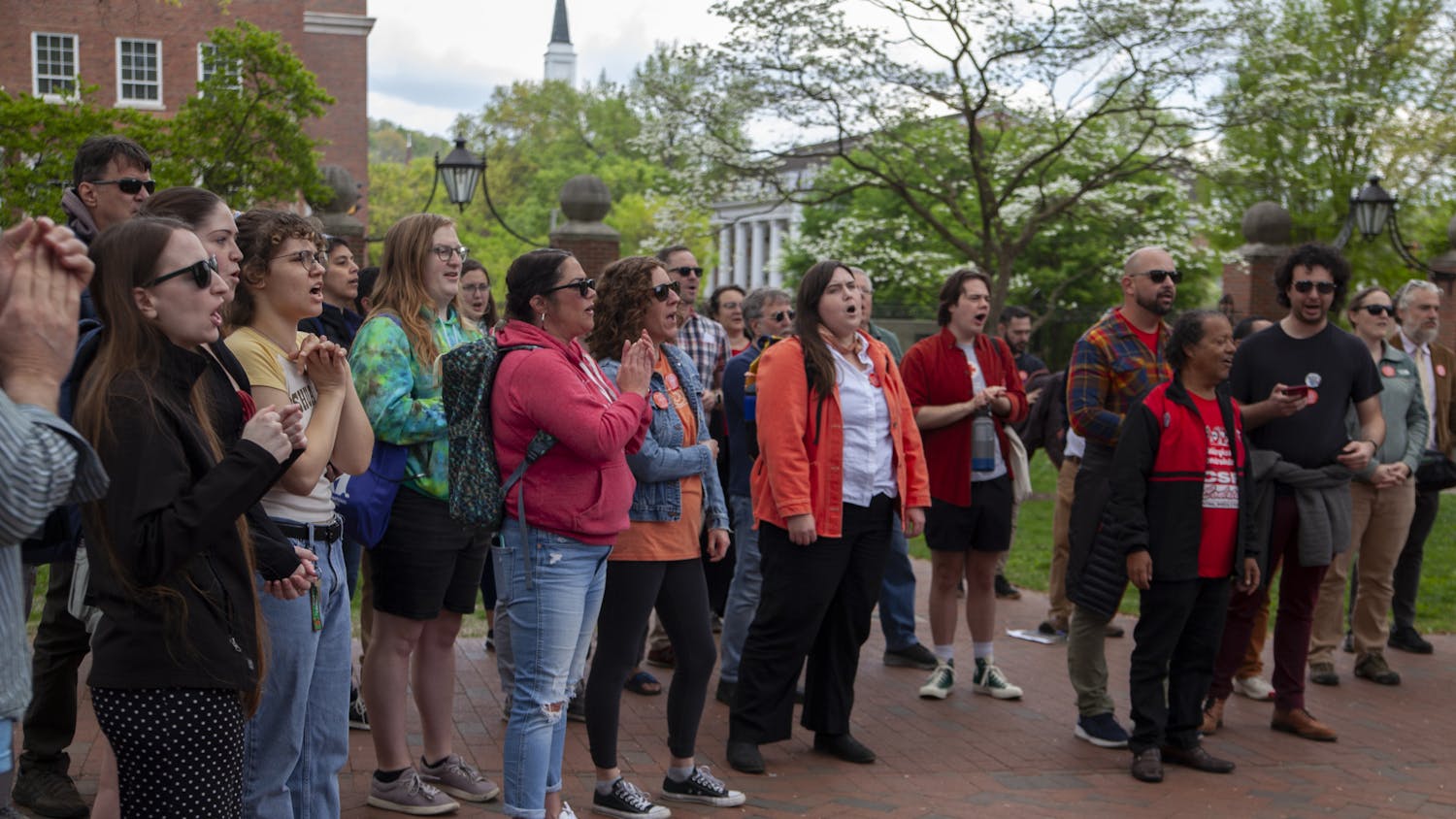OU students are more likely to use blue lights to call anyone else besides the police.
Ohio University students are more likely to use blue lights, a service available on campus for emergencies, to call someone other than the police.
When the 77 blue lights are actually used to call the cops, they are rarely for real emergencies.
More than 9,100 calls were made on blue lights since 2009 — 5,313 of which were test calls to the Ohio University Police Department facilitated by the OU maintenance staff. Out of the remaining 3,872 “true” volume calls, 93 were made to OUPD, while the remainder were calls to numbers other than OUPD or 911, according to data from OU’s Office of Information Technology.
Blue lights are call boxes situated throughout OU’s campus designed to provide people with an emergency button that directly calls OUPD.
Jeff Campbell, director of OU’s Environmental Health and Safety department, said earlier this month that the initial purpose of the blue lights was to provide students with a device to quickly contact law enforcement during emergency situations.
But the rise of cell phones has started to make the emergency contact devices obsolete.
“Now with everyone carrying cell phones and stuff, they’re just not used the way that they were intended for,” he said.
From 1991, when the system was installed, until 2004, the devices were only used twice for actual emergency situations, as previously reported by The Post at that time.
Students may soon see less blue lights dotted throughout campus pathways and grassy areas. Campbell said OU officials are moving the devices toward more high-traffic, “building-based” locations, such as the front doors of residence halls.
Campbell, who is a member of President Roderick McDavis’ advisory council on campus safety, said officials decided to update the blue light system after several meetings to make them more effective.
“The idea of putting one out in the middle of nowhere, like in a big field, is not going to be used,” he said. “We’re trying to do a better job of making them user-friendly for the people.”
Blue lights that were not worth the maintenance fee, based on damages and proximity to other devices, have been removed, Campbell said.
According to OIT communications manager Sean O’Malley, in the last five years four blue lights have been permanently removed from service — decreasing the number of blue lights from 81 to 77.
Although some blue lights have been put out of commission, other blue lights, such as the free-standing ones situated at the bike path, will continue to be maintained.
O’Malley said a blue light device typically costs anywhere between $900 to $4,000 to purchase, depending on the model and configuration.
To ensure all 77 blue light phones on campus function efficiently, OIT performs maintenance checks every month, O’Malley said. Maintenance, which happens on a monthly basis, typically cost $15,000 a year, he said.
Jamie Patton, assistant dean of students, said parents are typically appreciative of the blue lights and the additional level of safety they offer. Parents would negatively react if they were removed from campus altogether, he said.
Lt. Tim Ryan, OUPD’s head of criminal investigations who’s been with OUPD for about 10 years, can’t remember getting an emergency call from the blue light system, but believes they are still valuable.
“My opinion is that they are worthwhile because there are times when we are all without our phones,” Ryan said.
@joshualim93
jl951613@ohio.edu






